Transform ordinary spinach that you eat into a glowing green mixture under ultraviolet light! Explore the phenomenon of fluorescence, and learn about an important pigment in green plants called chlorophyll. This easy to set up plant experiment uses a few simple supplies to make a fascinating green glow! It might even encourage kids to eat more greens!
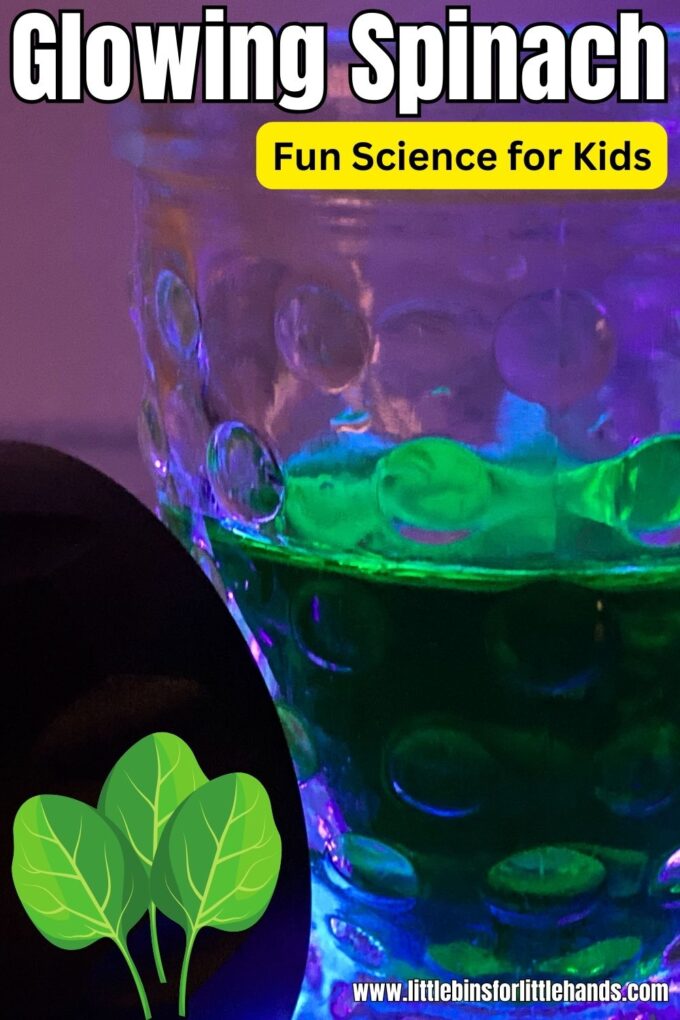
Explore Fluorescence with Spinach
Some of the most satisfying and memorable science experiments are the ones you can set up with simple supplies found in your own kitchen. That’s why we call it kitchen science!
This fun plant experiment introduces the concept of fluorescence in a hands-on and visually engaging way. It allows kids to observe a common plant, spinach, exhibiting a fascinating glow under ultraviolet light.
Kids can learn about the pigments present in plants, particularly chlorophyll. The experiment helps them understand that certain pigments can absorb light at one wavelength and emit light at another, resulting in the observed glow.
This experiment involves simple laboratory techniques, such as crushing spinach leaves, extracting pigments, and observing fluorescence. It is a great way to integrate concepts from biology, chemistry and physics.
Engaging in hands-on experiments, especially those with visually striking results, helps kids develop a positive attitude toward science. It can also cultivate a sense of wonder and excitement, fostering a lifelong interest in learning about the natural world.
Using The Scientific Method
The scientific method is a process or method of research. A problem is identified, information about the problem is gathered, a hypothesis or question is formulated from the information, and the hypothesis is tested with an experiment to prove or disprove its validity.
Sounds heavy… What in the world does that mean?!? It means you don’t need to try and solve the world’s biggest science questions! The scientific method is all about studying and learning things right around you.
As children develop practices that involve creating, gathering data evaluating, analyzing, and communicating, they can apply these critical thinking skills to any situation.
LEARN MORE HERE: Using The Scientific Method with Kids
Note: The use of the best Science and Engineering Practices is also relevant to the topic of using the scientific method. Read more here and see if it fits your science planning needs.
Helpful Science Resources
Here are a few resources that will help you introduce science more effectively to your kiddos or students. Then you can feel confident yourself when presenting materials. You’ll find helpful free printables throughout.
- Best Science Practices (as it relates to the scientific method)
- Science Vocabulary
- 8 Science Books for Kids
- All About Scientists
- Science Supplies List
- Science Tools for Kids
- Join us in the Club
The Science of Glowing Spinach
Glowing spinach is all to do with the presence of chlorophyll in spinach and its interaction with ultraviolet (UV) light.
Chlorophyll is a pigment found in the chloroplasts of plant cells, and it plays a crucial role in photosynthesis by capturing light energy. Chlorophyll is responsible for giving plants their green color.
Learn about the steps of photosynthesis and the parts of plant cells here.
When spinach is crushed and combined with ethanol, the plant cell walls break down, releasing the chlorophyll into the solution. Under UV light, chlorophyll can show fluorescence, causing the crushed spinach mixture to glow.
Fluorescence is a process where a substance absorbs light at one wavelength and then promptly emits light at a longer wavelength, often in the visible spectrum. This light is what we commonly see as a glow or fluorescence.
So, when you shine UV light on crushed spinach in ethanol, the chlorophyll present in the spinach fluoresces, producing the observed glow.
Do you know other green plants with chlorophyll can show similar fluorescence under UV light? Try this experiment with other leafy green plants and compare!
Turn It Into A Science Project
Science projects are an excellent tool for older kiddos to show what they know about science! Plus, they can be used in all sorts of environments including classrooms, homeschool, and groups.
Kids can take everything they have learned about using the scientific method, stating a hypothesis, choosing variables, making observations and analyzing and presenting data.
Want to turn this experiment into an awesome science fair project? Check out these helpful resources.
Free Printable Science Journal Worksheets
Create a science notebook with these easy-to-use science worksheets to accompany any experiment. Grab your free science process journal pack!
Glowing Spinach Experiment
Supplies:
- Spinach
- Zip bag
- Hammer
- Ethanol
- 2 small glasses
- Green food coloring
- Scissors
- Black / UV light
Instructions:
STEP 1: Place some spinach into a zip bag and use the hammer to crush it. Alternatively, you could use a mortar and pestle, or a blender.
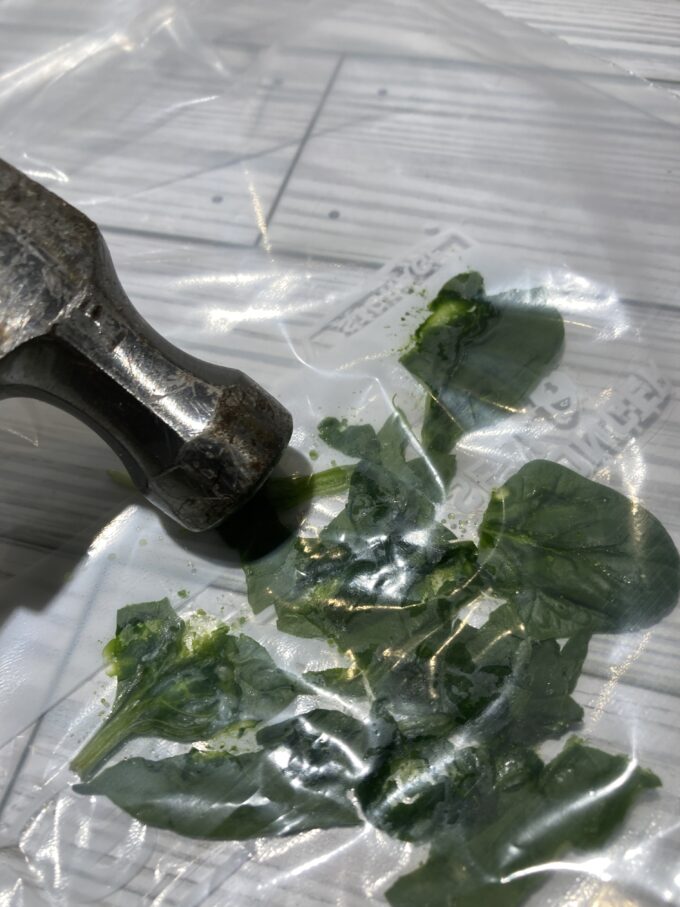
STEP 2: Add an ounce or 1 1/2 tablespoons of ethanol (found in vodka, some hand sanitizers or rubbing alcohol).
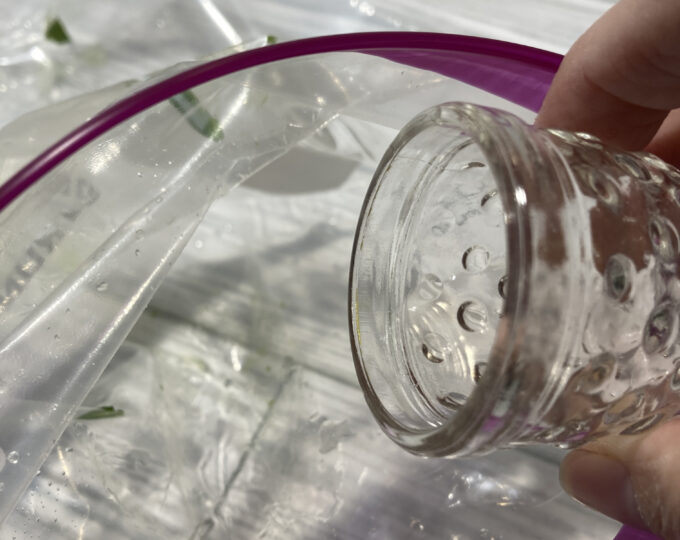
STEP 3: Continue to smash the spinach and ethanol together to form a green liquid.
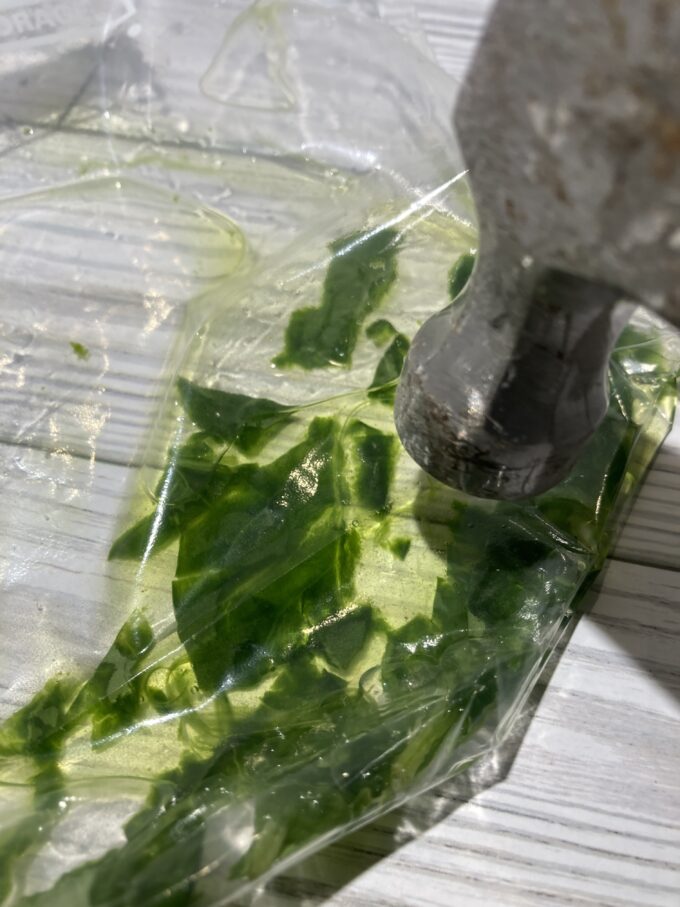
STEP 4: Snip a tiny corner of the bag and pour the liquid into one of the small glasses.
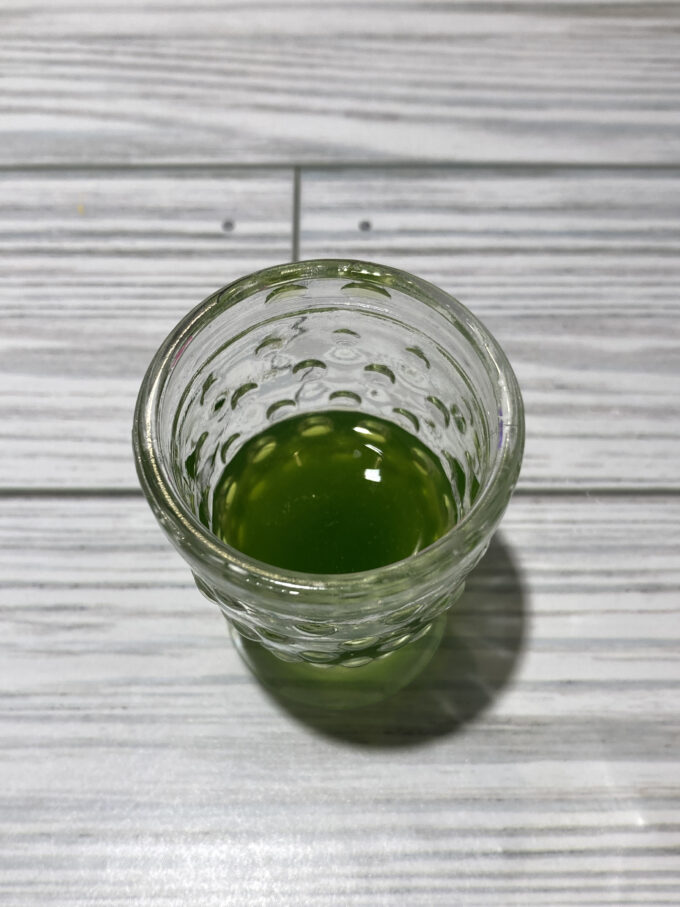
STEP 5: Now add an ounce (1 1/2 tablespoons) of water to the other glass and add a drop of green food coloring. Mix.

STEP 6: Turn out the lights and shine the UV light onto each glass. How do they look different? Record your observations.

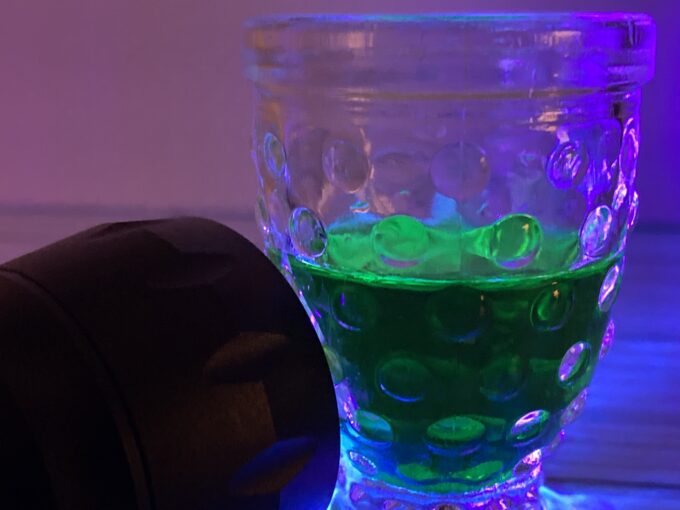
More Fun Plant Science Experiments
When you finish investigating the fluorescence of green plants, why not learn more about plants with one of these ideas below. You can find all our plant experiments here!
- Make red cabbage pH indicator
- Flower dissection
- Explore capillary action with celery
- Potato osmosis experiment
- How do plants breathe
- Leaf vein experiment
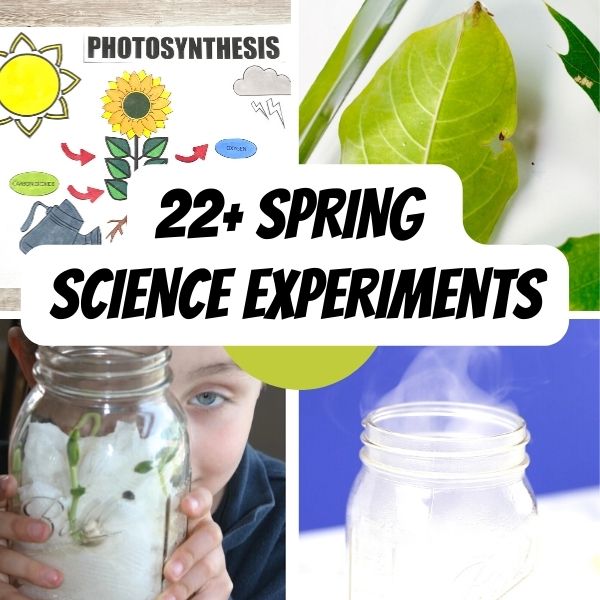
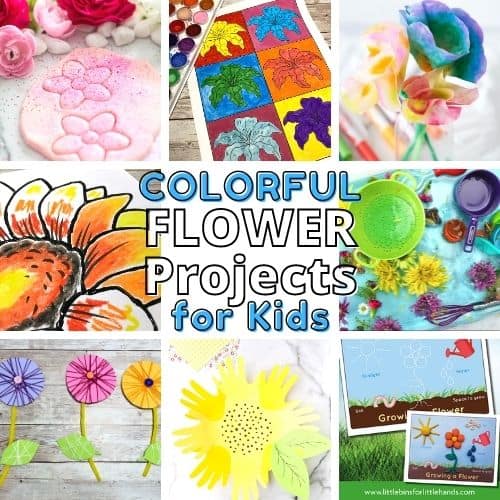
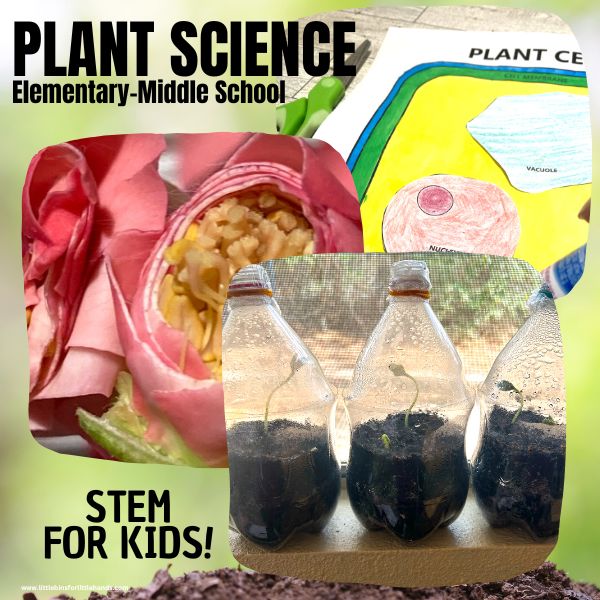
Printable Science Projects Pack
If you’re looking to grab all of our printable science projects in one convenient place plus exclusive worksheets and bonuses like a STEAM Project pack, our Science Project Pack is what you need! Over 300+ Pages!
- 90+ classic science activities with journal pages, supply lists, set up and process, and science information. NEW! Activity-specific observation pages!
- Best science practices posters and our original science method process folders for extra alternatives!
- Be a Collector activities pack introduces kids to the world of making collections through the eyes of a scientist. What will they collect first?
- Know the Words Science vocabulary pack includes flashcards, crosswords, and word searches that illuminate keywords in the experiments!
- My science journal writing prompts explore what it means to be a scientist!!
- Bonus STEAM Project Pack: Art meets science with doable projects!
- Bonus Quick Grab Packs for Biology, Earth Science, Chemistry, and Physics









